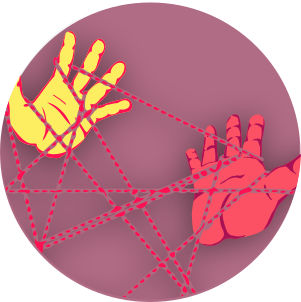Modules

Trust-Building Exercises
Breaking the ice, getting to know each other, identifying allies and adversaries, collectively build shared participation and co-existence agreements.

Rethinking Our Relationship with Technology
Tools and technology don’t have magic superpowers over us - we are the ones who decide what we give them access to.

Digital Security Basics 1
From how the internet works and safer browsing techniques, to securing devices from malware and unwanted access, and more.

Privacy
Our devices, our data – defining, understanding and reclaiming the right to privacy online.

Safe Online Advocacy
Spreading the message, and staying more safe, as women and human rights defenders online.

Safer Mobiles
Knowledge is power – the more we understand about our mobile devices, the more control over them we can take back.

Anonymity
How taking a closer look at the blurring line between physical and virtual spaces can help us regain control of our identities.

Encryption
When it comes to protecting data and communications from prying eyes, we alone hold the keys to our information.

Digital Security Basics 2
Storing and securing the information we value the most, and knowing when to push the ‘reset’ button.

Online Violence Against Women
Recognizing - and pushing back against - the patterns of harassment and abuse faced by women human rights defenders online.

Sexting
More safely engaging in an act of pleasurable resistance against racism, sexism, machismo, conservatism and heteronormativity.

Determining the Best Solution
Tools are not silver bullets – critical thinking and informed decision making are the true hallmarks of a strong, holistic practice of digital security.

Planning Ahead
What comes next? How organizations can maintain a steady course towards a collective digital security practice.

Self-Care
Our work is never easy – but before we can truly take care of others, we must first learn to take care of ourselves.

Closing & Review Exercises
That’s a wrap! Remembering what we’ve learned, and bringing our digital security training process to nurturing, constructive conclusions.







